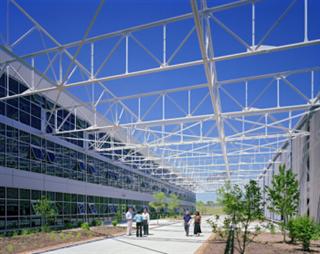
SAN JOSE, CA - Barely a year after adopting its Green Vision policy, the city of San Jose has approved environmentally friendly building standards to reduce energy and water consumption in new residential, commercial and industrial construction projects. Under the new green building policy, checklists based on the U.S. Green Building Council's Leadership in Energy and Environmental Design or Build It Green's GreenPoint standards are to be used for all new buildings regardless of type or size. The checklists are considered guidelines for educational purposes, according to the city.
Projects that meet certain square footage thresholds are required to satisfy energy efficiency and other environmental standards, according to the building policy. The thresholds and standards vary according to the type of construction and the size of the project.
Commercial and industrial buildings that are 25,000 square feet or more must meet LEED Silver standards. Residential developments of 10 or more units are to meet basic LEED certification standards or achieve 50 points under the GreenPoint rating system. Housing structures that are 75 feet high or taller are required to meet basic LEED standards.
The policy calls for tougher standards as of 2012. At that time, commercial and industrial buildings of 10,000 square feet or more and residential buildings 75 feet high or taller must meet LEED Silver standards. Structures of 10,000 square feet or more that are built by the city or the San Jose Redevelopment Agency are already required to meet LEED Silver status under a March 2007 measure that upgraded green building standards for municipal construction.
The City Council approved the green building policy for private sector construction on a 9-0 vote with two members absent on October 7, just under a year since its adoption of Mayor Chuck Reed's sweeping Green Vision for San Jose.
The 10 Green Vision goals, approved October 30, 2007, include building or retrofitting 50 million square feet of construction to green standards and reducing per capita energy consumption by 50 percent. Reed issued a statement last week that listed progress in each area.
For its new green building policy, the city sought input from 200 representatives from construction, engineering, development, design, architectural and electrical firms; trade, labor and professional organizations; and real estate, property management, environmental and green building groups. Fifteen meetings were held to obtain feedback, according to a report that accompanied the green building policy proposal.
Several were on hand to voice their support when Reed announced the policy was headed to the council for its vote. "We really had a lot of buy in," city spokeswoman Michelle McGurk told GreenerBuildings.
Source: GreenerBuildings.com